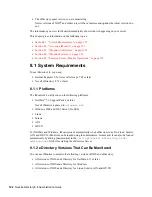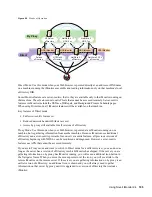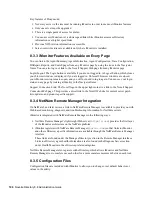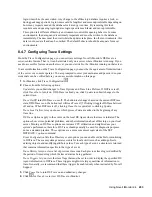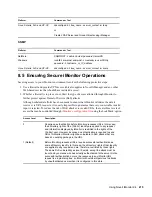
Using Novell iMonitor 2.4
203
no
vd
ocx
(e
n)
6 Ap
ril 20
07
login time while the user waited. Any change to the eDirectory database requires a lock, so
during peak usage periods, login times could be lengthier and more unpredictable depending on
how many requests needed the database lock at any given time. By removing this lock
requirement and queuing login updates, login speed is much faster and more predictable.
This option lets different eDirectory environments control this queuing behavior. In some
environments, the data queued is extremely important and must be written to the database
immediately. The user must then wait while the updates take place. In other environments, this
data is not used at all and can be omitted. The default behavior should be adequate for most
environments.
8.4.7 Configuring Trace Settings
From the Trace Configuration page, you can set trace settings. Novell iMonitor's DSTrace is a
server-centric feature. That is, it can be initiated only on a server where iMonitor is running. If you
need to access this feature on another server, you must switch to the iMonitor running on that server.
To access information on the Trace Configuration page, you must be the equivalent of Administrator
of the server or a console operator. You are prompted to enter your username and password so your
credentials can be verified before you can access information on this page.
1
In iMonitor, click Trace Configuration
.
2
Choose from the following options:
Update
lets you submit changes to Trace Options and Trace Line Prefixes. If DSTrace is off,
click
Trace On
to turn it on. If DSTrace is already on, click
Update
to submit changes to the
current trace.
Trace On/Off
turns DSTrace on or off. The button text changes based on the current DSTrace
state. If DSTrace is on, the button text will read
Trace Off
. Clicking it toggles DSTrace between
off and on. When DSTrace is off, clicking
Trace On
is equivalent to clicking
Update
.
Trace Line Prefixes
lets you choose which pieces of data are added to the beginning of any
trace line.
DS Trace Options
apply to the events on the local DS Agent where the trace is initiated. The
options show errors, potential problems, and other information about eDirectory on your local
server. Turning on DS Trace options can increase CPU utilization and might reduce your
system’s performance; therefore, DS Trace should generally be used for diagnostic purposes,
not as a standard practice. These options are a more convenient equivalent of the SET
D
option
command.
Event Configuration
lists the eDirectory event options you can enable or disable for monitoring
in DSTrace. The event system generates events for local activities such as adding objects,
deleting objects, and modifying attribute values. For each type of event, a structure is returned
that contains information specific to that type of event.
Trace History
lets you view a list of previous trace runs. Each previous trace log is identified by
the period of time during which the trace data was being gathered.
Trace Triggers
let you view the trace flags that must be set in order to display the specified DS
Agent information in DSTrace. These triggers might write large quantities of information to
trace. Generally, we recommend that these triggers be enabled only when instructed by Novell
Support.
3
Click
Trace On
to turn DS Trace on and submit any changes.
4
Click
or
Trace Live
to view DS Trace in iMonitor.
Summary of Contents for EDIRECTORY 8.8 SP2
Page 4: ...novdocx en 6 April 2007...
Page 116: ...116 Novell eDirectory 8 8 Administration Guide novdocx en 6 April 2007...
Page 128: ...128 Novell eDirectory 8 8 Administration Guide novdocx en 6 April 2007...
Page 255: ...256 Novell eDirectory 8 8 Administration Guide novdocx en 6 April 2007...
Page 406: ...408 Novell eDirectory 8 8 Administration Guide novdocx en 6 April 2007...
Page 563: ...566 Novell eDirectory 8 8 Administration Guide novdocx en 6 April 2007...
Page 573: ...576 Novell eDirectory 8 8 Administration Guide novdocx en 6 April 2007...
Page 601: ...604 Novell eDirectory 8 8 Administration Guide novdocx en 6 April 2007...




